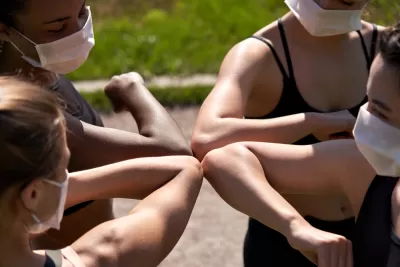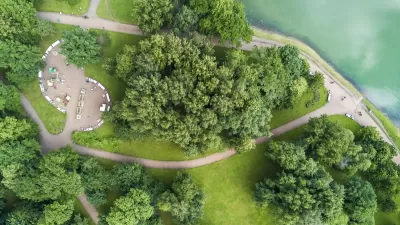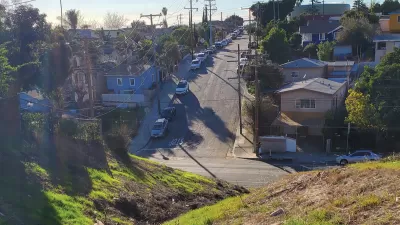A growing design movement seeks to provide parks and playgrounds that meet the unique needs of teen girls.

One size certainly does not fit all when it comes to park and playground design. In this informative article, Alexandra Lange offers insights about the unique needs of teenage girls with respect to public spaces. She points out that most parks and playgrounds tend to be designed with boys and competition in mind. So, what do teenage girls want and need? Lange summarizes the results of surveys: "they want hangout spots with cozy round tables and art or games that foster interaction, not competition. They want gyms and roller rinks and skate parks where they can try and fail without judgement or catcalls. They want to listen to music outdoors without having to pay for a festival ticket. Making space for girls means rethinking which age groups need to swing and climb, how to encourage physical activity (and not just playing a sport), and how to make a safe, sheltered place for outdoor conversation."
The article discusses a temporary playscape called "Swing Time," which included 20 hoop-shaped swings suspended from a white shade structure that would light up when in use, glowing purple with vigorous motion. Swing Time turned out to be highly popular with teen girls because it was "big enough for adolescent bodies, close enough for conversation, fun enough to appeal to a desire for thrills." To see what this unique playscape looked like and better understand the need and importance of public spaces that specifically address the needs of teen girls, be sure to check out the source article.
FULL STORY: Teen Girls Need Better Public Spaces to Hang Out

Maui's Vacation Rental Debate Turns Ugly
Verbal attacks, misinformation campaigns and fistfights plague a high-stakes debate to convert thousands of vacation rentals into long-term housing.

Planetizen Federal Action Tracker
A weekly monitor of how Trump’s orders and actions are impacting planners and planning in America.

In Urban Planning, AI Prompting Could be the New Design Thinking
Creativity has long been key to great urban design. What if we see AI as our new creative partner?

How Trump's HUD Budget Proposal Would Harm Homelessness Response
Experts say the change to the HUD budget would make it more difficult to identify people who are homeless and connect them with services, and to prevent homelessness.

The Vast Potential of the Right-of-Way
One writer argues that the space between two building faces is the most important element of the built environment.

Florida Seniors Face Rising Homelessness Risk
High housing costs are pushing more seniors, many of them on a fixed income, into homelessness.
Urban Design for Planners 1: Software Tools
This six-course series explores essential urban design concepts using open source software and equips planners with the tools they need to participate fully in the urban design process.
Planning for Universal Design
Learn the tools for implementing Universal Design in planning regulations.
Gallatin County Department of Planning & Community Development
Heyer Gruel & Associates PA
JM Goldson LLC
City of Camden Redevelopment Agency
City of Astoria
Transportation Research & Education Center (TREC) at Portland State University
Jefferson Parish Government
Camden Redevelopment Agency
City of Claremont





























